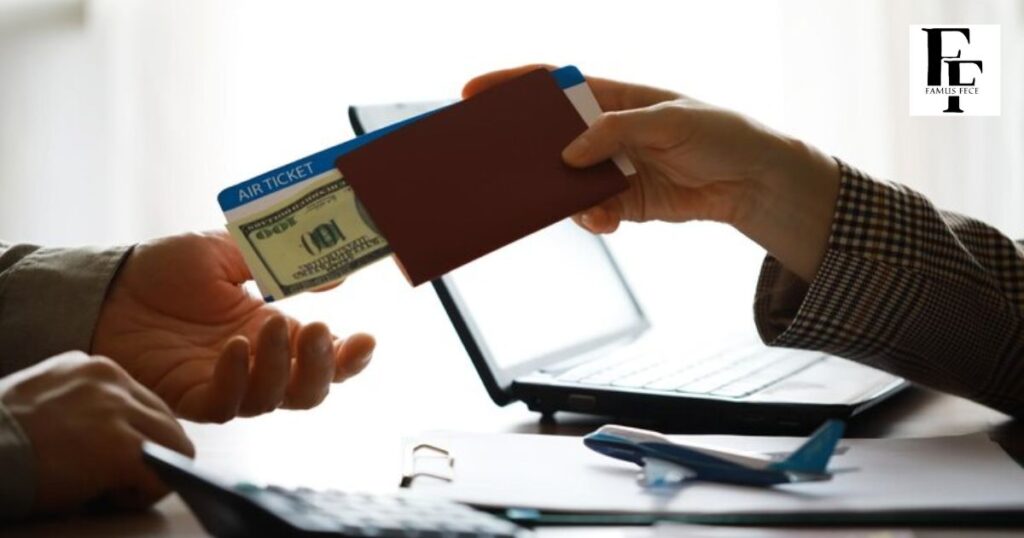PAI ISO is a standard charge that can show up when you use an ATM or pay with your debit or credit card. But what does it mean?
This article will explain in easy-to-understand terms what a PAI ISO charge is and why you might see it. We’ll break down what the letters stand for and look at some examples of when they could appear.
You’ll also learn what PAI ISO means for your bank account and why it’s essential to be aware of it. By the end, the mystery around this acronym will be solved, and you’ll know what to expect when it pops up in your future statements.
What is PAI ISO?
PAI ISO stands for Payment Alliance International ISO. In simple terms, Payment Alliance International (PAI) provides ATMs and processes card payments for banks and shops. ISO means Independent Sales Organization, which helps PAI work with other companies.
So PAI ISO refers to when PAI handles a transaction using machines from an ISO partner company.
PAI ISO is the name of the fee you see on your statement anytime PAI processes a payment you made with your debit or credit card at an ATM or store. Even though it’s an unusual label, it just means their company assisted in completing your purchase or cash withdrawal.
Why is PAI ISO on my bank statement?
PAI ISO will show up on your statement whenever you use your card at an ATM or shop that works with PAI to process payments. These could be places like gas stations, pharmacies, or convenience stores that have deals with PAI.
The charge also appears if you take out cash from an ATM not owned by your bank. In that case, your bank will likely pay a fee to PAI to let you access other ATMs. So, they pass the cost onto you as a “PAI ISO” fee to recoup the expense. Either way, it simply means PAI helped facilitate a recent transaction of yours.
What does PAI ISO mean for my bank account?

A PAI ISO charge on your statement really means that PAI was the middleman who made a recent ATM withdrawal or purchase work. It won’t affect your account balance. However, your bank may charge you a separate fee if the transaction happens at an out-of-network ATM.
That fee would show up right along with the PAI ISO charge on your statement. Other than that, it’s simply an identifying label to let you know who processed a specific transaction.
Read More About: Complexities Of LRP In Finance
Why is it essential to understand PAI ISO charges?
It’s essential to understand PAI ISO charges for a few reasons. Knowing what the acronym means allows you to recognize transactions that went through PAI’s system quickly. This helps you keep track of your spending.
Also, being aware of when banks charge separate out-of-network ATM fees lets you avoid extra costs. Lastly, recognizing legitimate PAI ISO charges helps protect your account by allowing you to spot fraudulent activity more efficiently. Understanding these charges gives you more control over your bank account and money.
How can I avoid PAI ISO charges?

There is an easy way to avoid PAI ISO charges or any potential extra fees from your bank.
Try only to use the ATMs with your bank’s logo. You can find these by looking at the bank’s website or app. Just enter your zip code, and it will show you nearby locations. Also, make large withdrawals instead of small, frequent ones when you do need to use another bank’s ATM.
Consider using a credit card instead of a debit for small purchases, as credit cards tend to have lower fees for out-of-network transactions. By sticking to ATMs connected to your bank, you’ll steer clear of those confusing PAI ISO charges.
FAQ’s
What if I see a PAI ISO charge but don’t use an ATM?
If you find a PAI ISO fee on your statement and have yet to withdraw cash, call your bank right away. Someone may have access to your card without permission.
How much do PAI ISO charges typically cost?
PAI ISO charges themselves are usually just a small processing fee of $1 to $3. Bank out-of-network fees on top of that can vary more, from $2 up to $5 per withdrawal.
Are PAI ISO charges tax deductible?
PAI ISO charges and ATM fees are generally not considered tax deductions. They are viewed as regular banking expenses rather than business costs.
What do I do if a PAI ISO charge is wrong?
Contact your bank promptly if a PAI ISO fee needs to be corrected. Provide details to allow them to research if it was a mistake or fraudulent activity on your account.
Why don’t all banks use PAI ISO?
Different banks have agreements with various payment processors. So, while many use PAI ISO, some prefer different companies to handle transactions through their ATM and merchant networks instead.
Final Thoughts
Now you have a clear understanding of what a PAI ISO charge is and why you may see it on your bank statements. PAI ISO refers to transactions that were processed through the Payment Alliance International network, either at an ATM or merchant that uses their services.
While the letters may look confusing, they indicate the company behind the scenes that facilitated your withdrawal or purchase. With the knowledge gained from this article, you can better manage your finances by avoiding unnecessary fees and recognizing charges on your statements. Following some best practices, like using your bank’s ATMs, will keep those pesky PAI ISO charges from unexpectedly appearing. Overall, recognizing standard banking terms and acronyms helps maintain awareness and control over your account.
Understanding charges ensures you can identify any suspect activity. As always, if you have additional questions about specific charges on your statements, contact your financial institution directly for clarity. Armed with the insights covered today, you’re well-equipped to stay on top of your banking transactions going forward.

Experienced website administrator Specializing in general topics. Skilled in managing content, Optimizing User Experience, and ensuring site functionality. Dedicated to Delivering Quality and Engaging online experiences for Visitors.












